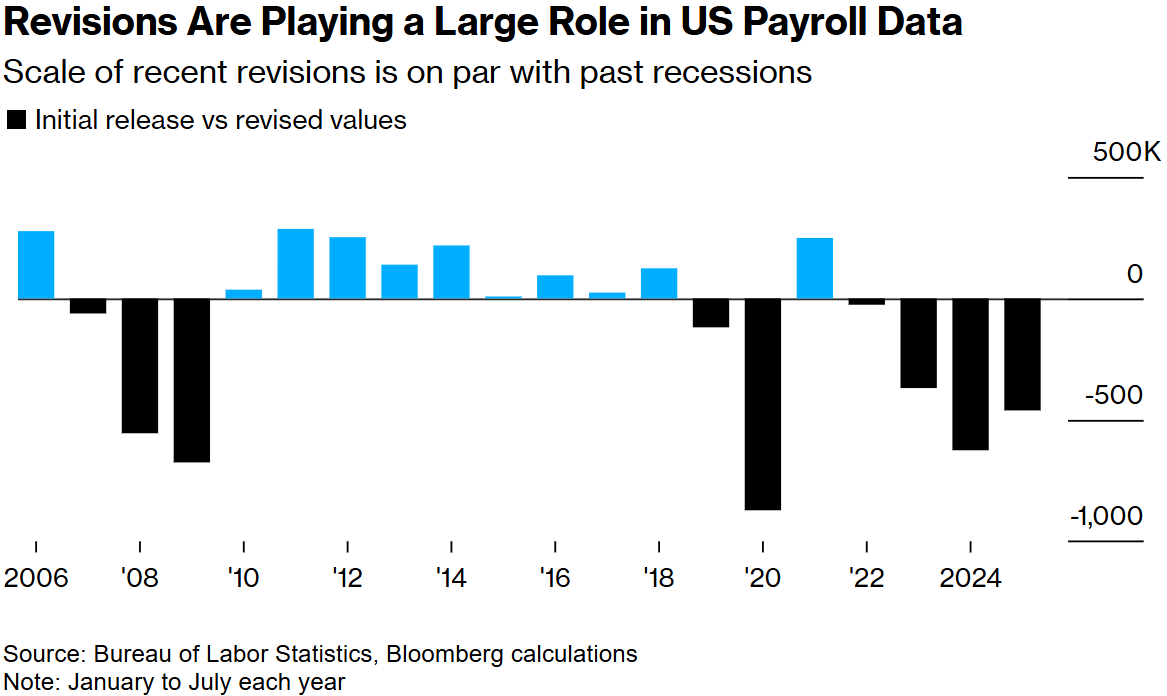A 2.6 Million Jobs Just Vanished! US Statistical System Plunges into Trust Crisis: Response Rate Dives Below 60%
Zhitong Caiping App notices that the latest employment report shows that US job growth data has suffered its largest downward revision since the pandemic, completely rewriting the near-month labor market landscape.
The Bureau of Labor Statistics (BLS) released a statement on Friday showing that the total non-farm employment in May and June was revised downward by nearly 2.6 million. This downward revision is partly due to seasonal adjustment issues, but economists believe it also reflects a widespread trend of low response rates.
US President Trump quickly seized upon this revision, publishing a statement on social media calling it a "major mistake" and announcing the dismissal of BLS Director Erica McTavish.

The revision mainly focused on the education department at the state and local government level - this field had previously reported significant job growth in June, but was revised downward sharply a month later.
According to BLS's statement, these fields accounted for approximately 40% of the total revision. The main reason is that "regular operations involve supplementing/adjusting sample data after initial release".
This reveals a more worrying underlying trend: the statistical response rate has been continuously declining.
BLS conducts three-month cycles to survey businesses, with more companies responding to obtain a more complete picture. However, the initial response rate continues to decline, with the recent collection rate repeatedly dipping below 60% - far lower than the pre-pandemic level of around 70%.
Omair Sharif, CEO of Inflation Insights, pointed out that "the more data is missing, and the later it's reported, the greater the risk of revision beyond expectations." "50% response rate just isn't enough."

Initial response rate of employment survey drops sharply
As public sentiment towards tedious surveys continues to rise, and trust in government institutions declines, the statistical response rate has been declining for multiple years. Statistical agencies also face budget cuts and staff shortages - a situation that has become increasingly severe under Trump's presidency.
Gregory Daco, chief economist at ANP and Paternon, stated that "government funding reductions are affecting economic data collection and analysis abilities" - "All future reports from the BLS may experience larger fluctuations."
This week, the Bureau of Labor Statistics announced that it has suspended about 15% of its consumer price index (a key inflation report) sample. Previously, the agency had announced a suspension of data collection in three major metropolitan areas and stated that if existing resources cannot support data collection, it will suspend collection.
Trump Effect
Derek Holt, capital markets economist at Canadian Imperial Bank of Commerce, proposed another possible reason: policy shockwaves from Washington. "In an environment where employers are busy responding to rapid changes in trade, immigration, fiscal and other policies," data quality may be further impaired by low response rates."
Before this report, Federal Reserve Chairman Christopher Waller had included "expected data revisions" as one of the reasons for voting in support of a rate cut this week - differing from the majority view.
In addition to the BLS's rolling revision of employment data, there is also an annual revision in February that will release a larger-scale revision to compare with more accurate but less timely data sources. The BLS will release preliminary revisions several months in advance, with last year's forecast being the largest since 2009.
